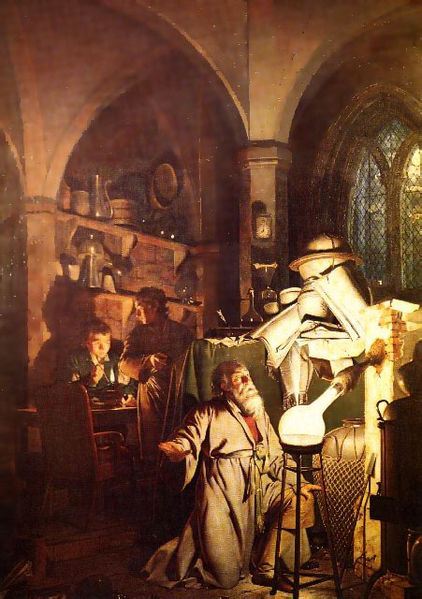Wright of Derby (1734-1792) was one of the most important English painters of the eighteenth century. He linked elements of Romanticism with powerful images of science and technology. His depictions of artificial light on the faces of experimenters and their audiences captured the sense of wonder attendant on discoveries in natural science. His painting The Alchymist in Search of the Philosophers’ Stone Discovers Phosphorus (1771) –above–tells us all we need to know about the intersection between magic, science, and amazement in the early European Renaissance. The expression on the face of this natural philosopher (scientist) reveals the precise spirit that would uncover many of the hitherto secret laws of nature from 1500-1800. From that point on it was left to industry and technology to move society from the darkness of an earlier age to the “light” of the Enlightenment.
Wright of Derby links:
The Alchymist in Search of the Philosophers’ Stone Discovers Phosphorus (1771)
Experiment on a Bird in the Airpump (University of North Carolina / WebMuseum)
Joseph Wright biography (University of North Carolina and WebMuseum)

